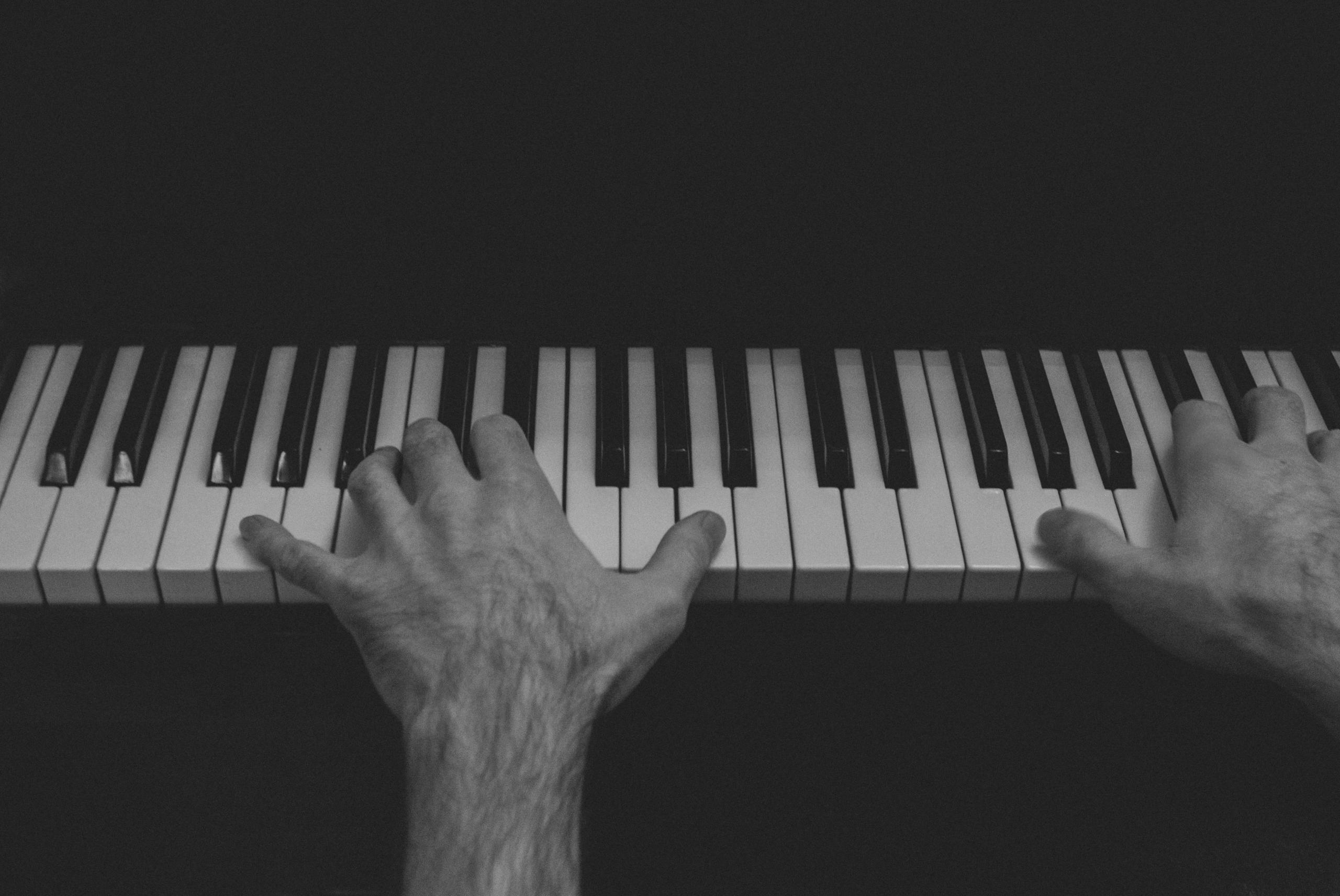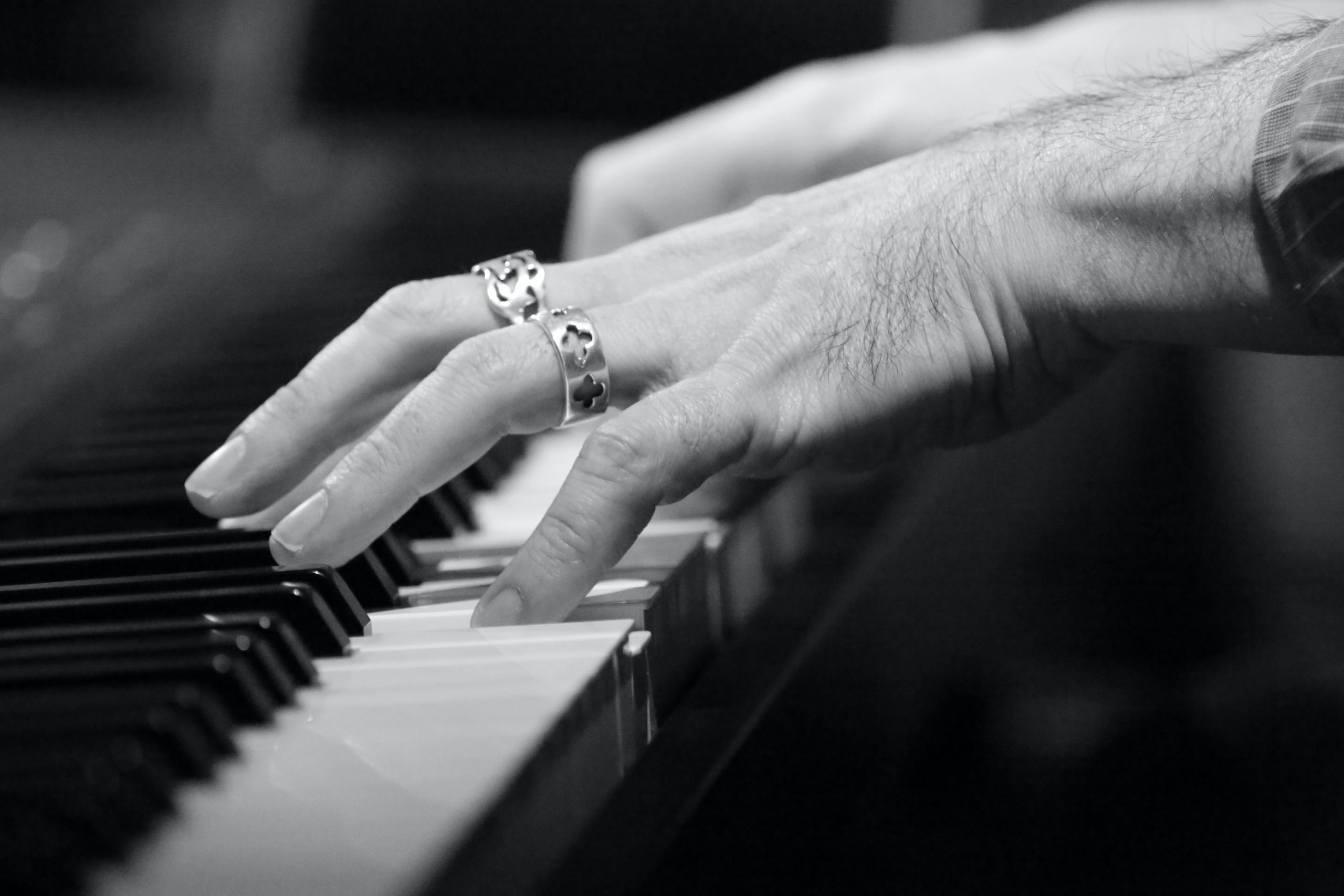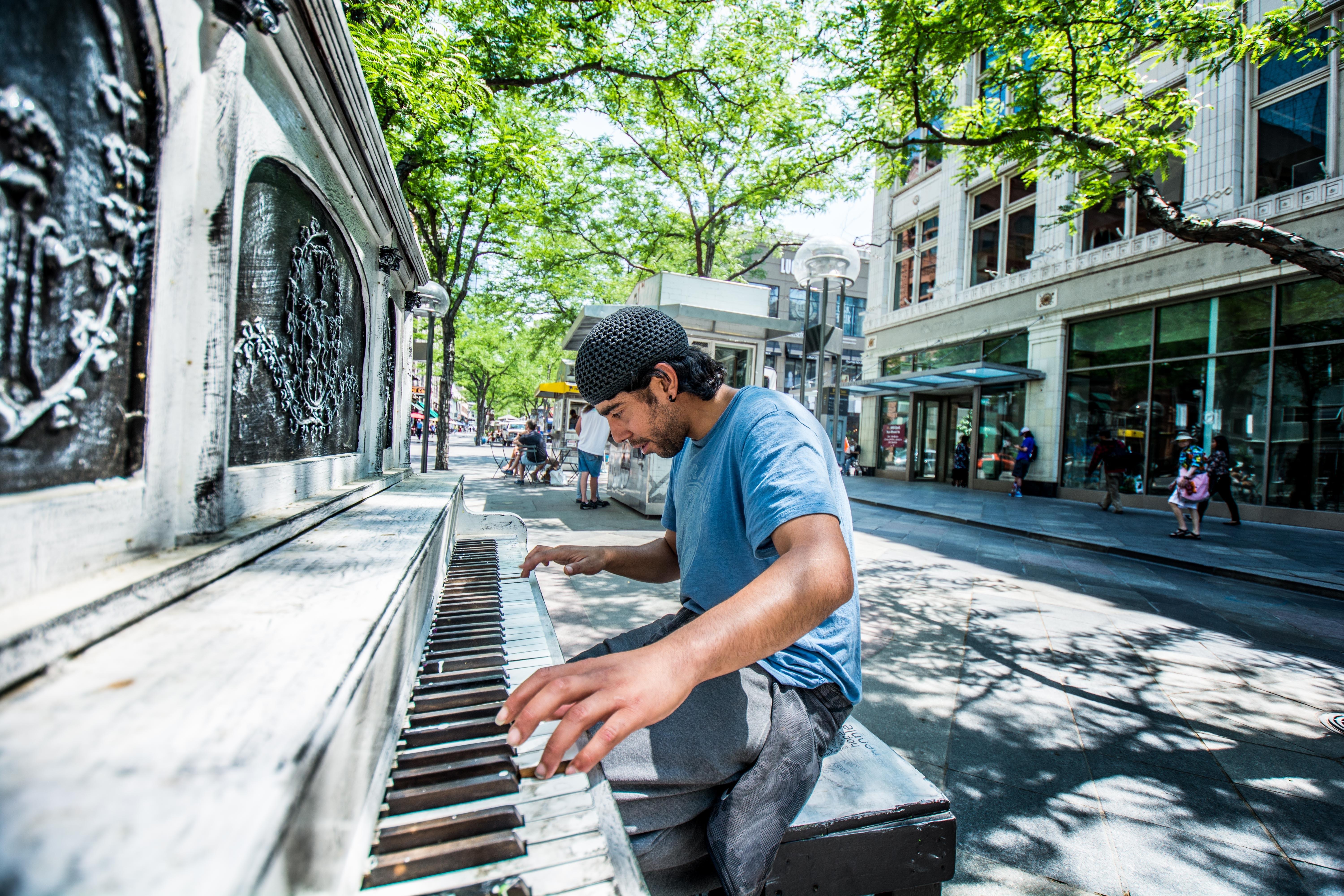Learning to play the piano is a complex endeavour. How long it takes is up to you.
One of the most difficult things about playing really well is not always about being able to follow the music, read notation and understand music theory, but about proper hand placement on piano.
Coordination is vital for correct hand positions on piano.
It will not help to have a right hand that glides effortlessly across the keys if your left hand is stiff and rigid on the other side.
Correct piano hand posture is one of the things that is overlooked when learning to play the piano as an adult, however, this guide provides tips on how to master hand positions on piano for those with a dominant right hand. Having said this, the same principles will apply to lefties.
You would do well to remember that dedicating extra time to practising your piano left handed will help you to progress more quickly.

Why Improve Your Piano Left Handed?
Firstly, let’s consider the reasons why improving your left hand positions for piano are important, because then you will be convinced to work on it.
One way to see how this training can help is to look at how you type on a keyboard. If you are fortunate to be able to touch type, you will know how convenient a skill it is!
If you are not, imagine for a moment that you are using all of your fingers on both hands to type. Now put your left hand behind your back and attempt to type. Chances are that is frustrating because typing properly means accessing letters like a, e and t with your left hand!

This, of course, is an exaggerated analogy because proper hand placement on piano requires using both hands. The point is that it is a mistake to only rely on your dominant hand when it comes to hand positions on piano because when playing the piano you are required to be ambidextrous.
If your left hand lags behind, unfortunately, it will slow you down and impact the quality of your playing. Not unlike typing, if every e and a come slower than i and u, sentences will appear too slowly on the screen.
It is the same with correct piano hand posture, you won’t be able to progress if your piano left handed skills are not up to scratch!
Ok, by now you have got it, proper hand placement on piano is critical to your success. What can you do about it?
Master Piano Left Handed with a Tutor
To figure out the correct piano hand posture you are going to need some help. Of course, self-teaching is always an option, but one of the most important things you will miss out on is an extra set of eyes to correct you. This is best done with the help of an experienced piano tutor. A private piano tutor like those found on Superprof can help you to identify and process common mistakes so that you speed up your learning process.

Besides that, working with a face-to-face or online piano tutor will help with myriad other things that go with learning how to play the piano in general too.
Through working on your piano left handed techniques with a tutor, you could end up finding out about different music styles, correcting mistakes you never realised you had and much more. Working with a tutor is much more enjoyable than trying to figure out the piano on your own.
Apart from providing a roadmap for your musical mastery journey, piano tutors are also there to tip you off about all the best resources available today. By honing in on their recommendations you are guaranteed to save time on random internet searches that offer no guarantee.
Who knows, you could make a friend too. It can be really rewarding to find someone with similar interests who will share your enthusiasm, help you and motivate you to persevere. Having said this, finding the right teacher is part of the success and enjoyment of private tuition and this is where Superprof can help.
There are reviews from past students on profile pages and it also may be possible to receive your introductory lesson for free. This is the most important way to find out whether or not your potential tutor is a good personality fit for you or not.
Another advantage to learning piano left handed with a Superprof tutor is that you can use the platform’s location tool to find a teacher situated near to you, or opt for online lessons with one of the millions of other tutors from around the world.
So now we have covered the basics, let’s take a look at some of the exercises you are likely to encounter with the help of an experienced piano teacher.
Exercise 1: Finger Fluidity
The first exercise to improve your piano left handed technique is called finger fluidity. It is very simple, flex your fingers, find a keyboard or piano, get comfortable on a chair and let’s get started.
The goal of the exercise is to loosen up fingers on your left hand to make playing piano left handed a bit easier. Not unlike loosening up your tongue to help tackle foreign language pronunciation, this exercise does a similar job for your fingers.
Once you are in the correct piano position, this is what you have to do:
- Using your non-dominant hand, be that your left or right hand, place four of your fingers and thumb on the keyboard across five keys.
- Next, gently roll your fingers beginning with your pinky and ending with your thumb and repeat.
As you do this, you are in fact playing each individual key. Not only that, you are going at a pace and rhythm that is manageable and not too fast. After doing this for a few rounds, you’ll notice that your pinky sticks out and that you feel some tension in your left hand. This is absolutely normal and all part of the process to learning piano left handed.
- When you begin to get more comfortable with that exercise, you can make up a pattern to make things a bit more challenging. For instance, you could play something like: 5,4,3,3,2,1,3,3 or any other combinations that you can think of.

Exercise 2: Finger Flow
The next exercise for practising piano left handed is all about taking another step to improve the movement of your left hand.
After all, a stationary left hand that is able to play five keys will only take you so far in your journey to correct piano hand posture and general piano mastery.
At this point, you want to be able to ensure that your left hand flows across the keys at the same pace and proficiency of your right hand. Bearing that in mind as your end goal, make sure that you have the proper hand placement on piano and do this exercise:
- Not unlike your efforts in the first hand positions on piano exercise, begin by placing the fingers and thumb of your left hand across all five keys on the keyboard or piano.
- To start, play the key just beneath your pinky finger and afterwards, move your thumb up one key to the right so that you can play that key.
Besides working on your hand's positions for piano, what you are doing here is carefully practising hand movement and correct piano hand posture. You will soon notice how your fingers flow more easily with the keys. Like anything new, this may be slightly tricky to pull off at first so do not be disheartened if it takes a few attempts. Try to stick with it by learning to manoeuvre your left hand properly as this will have a hugely positive impact on your piano playing skills.
- The evolution from this movement is to then slide along the keys in a way that allows your pinky finger and thumb to hit different keys each time.
There’s a pretty good chance that just by doing this exercise well, your fingers will begin to ache after a little while. Do not let this concern you, just make sure that you stretch and shake them out intermittently and once you are done.
After playing around with hand positions for piano, you can try to work on learning piano scales, piano chords and piano notes. Find a few easy piano songs to accompany you as you learn these techniques and before long you will see and feel an improvement.
Remember to persevere even when your piano left handed exercises get tough. Before long, you will have the confidence and skill to really start enjoying your piano playing.















